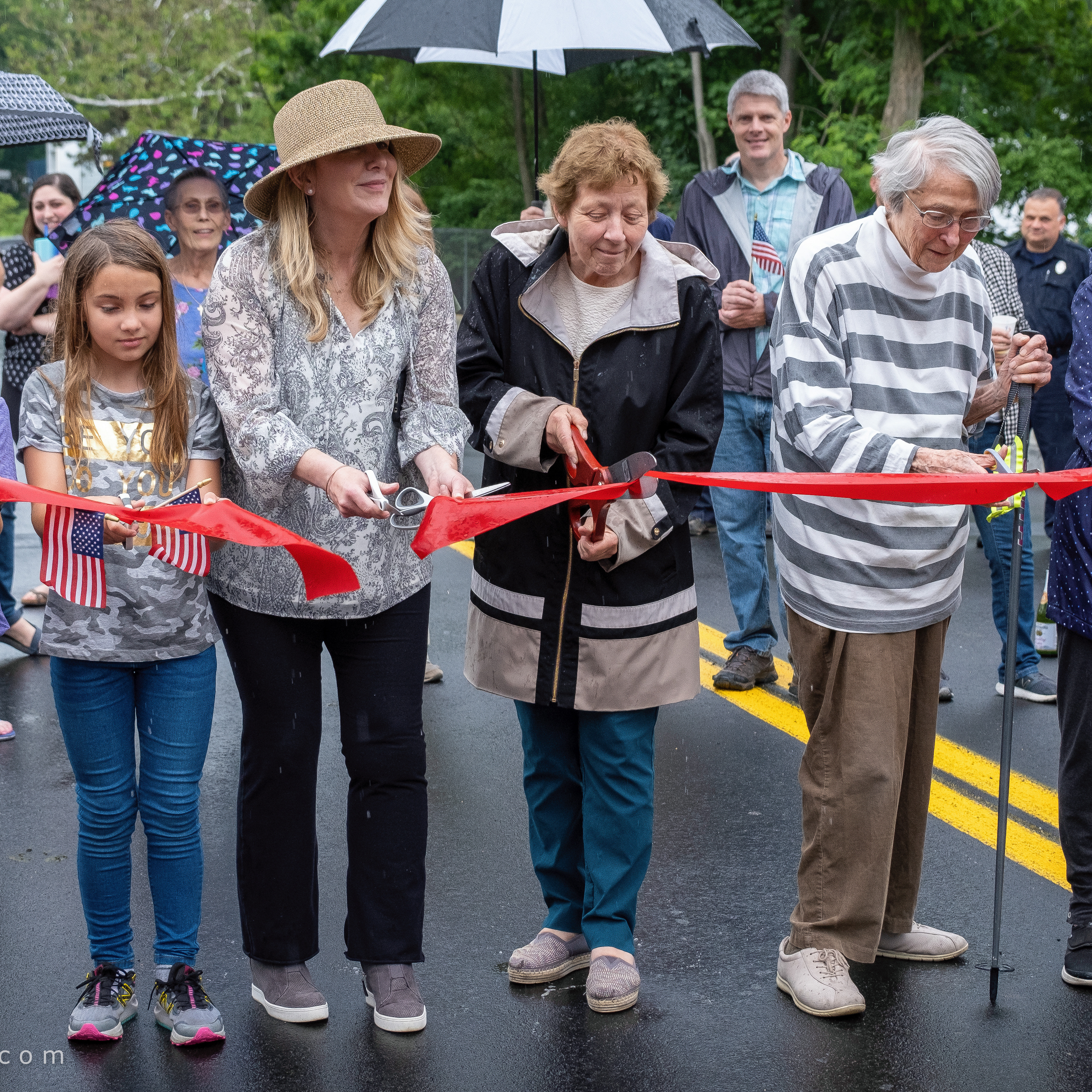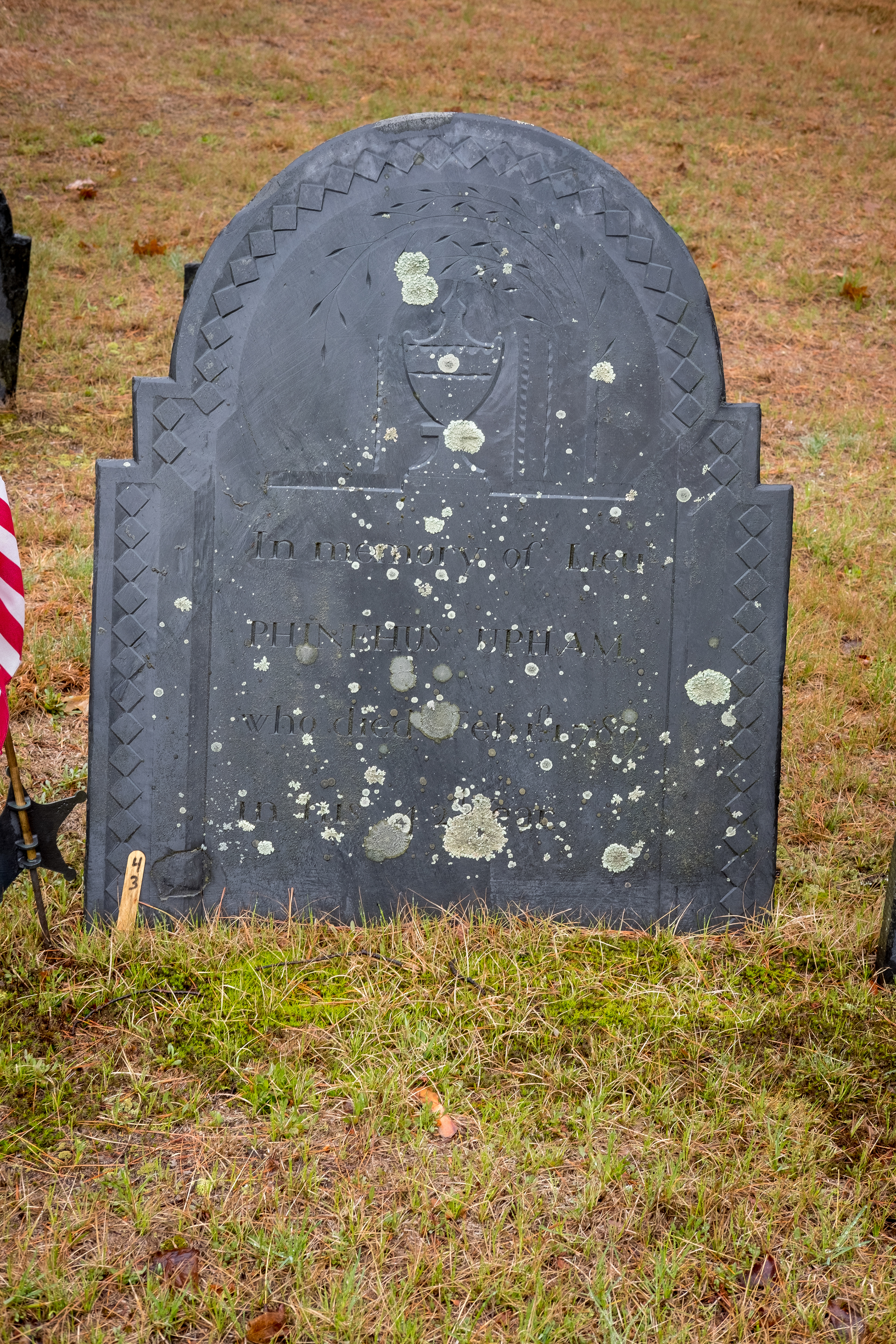
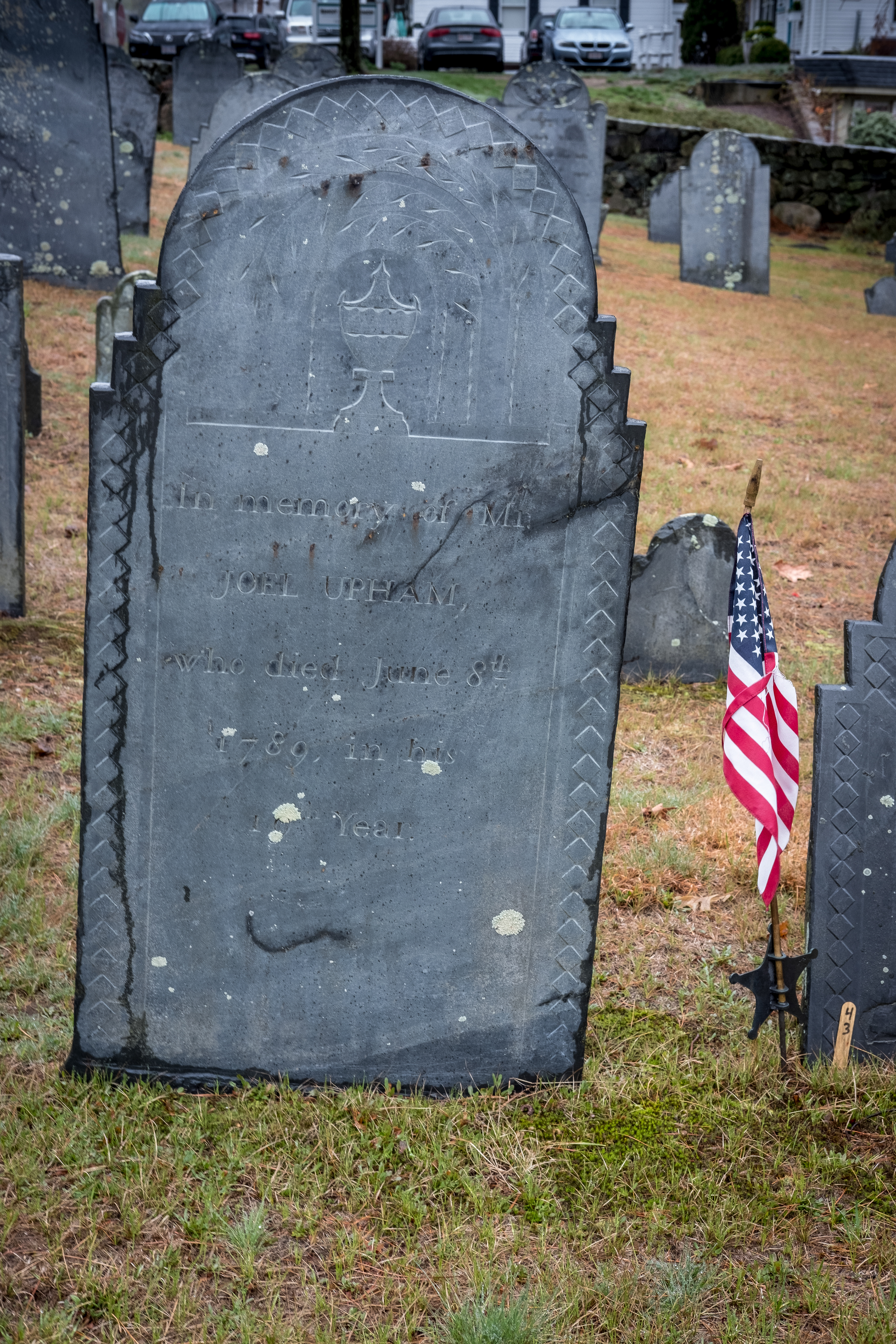

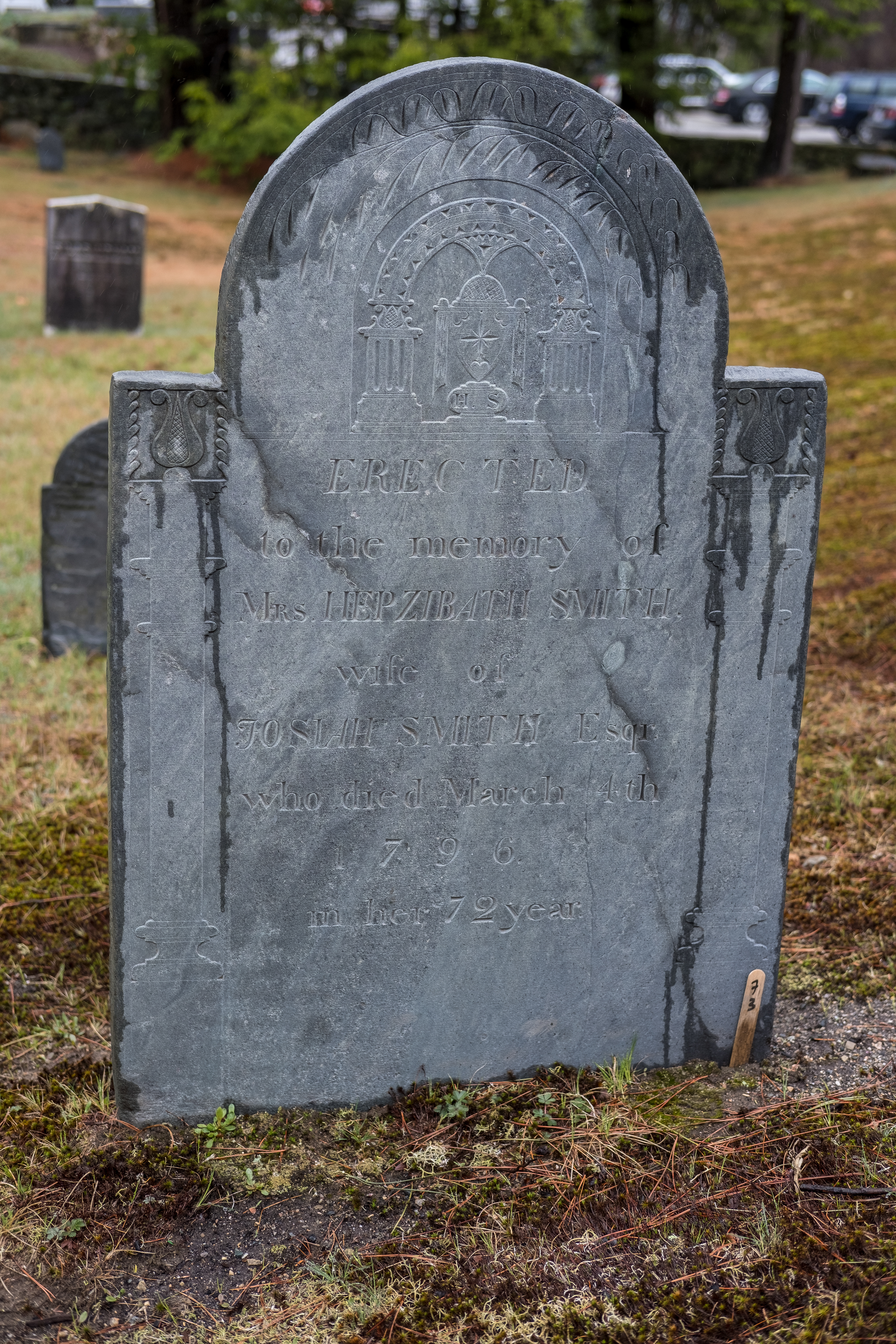
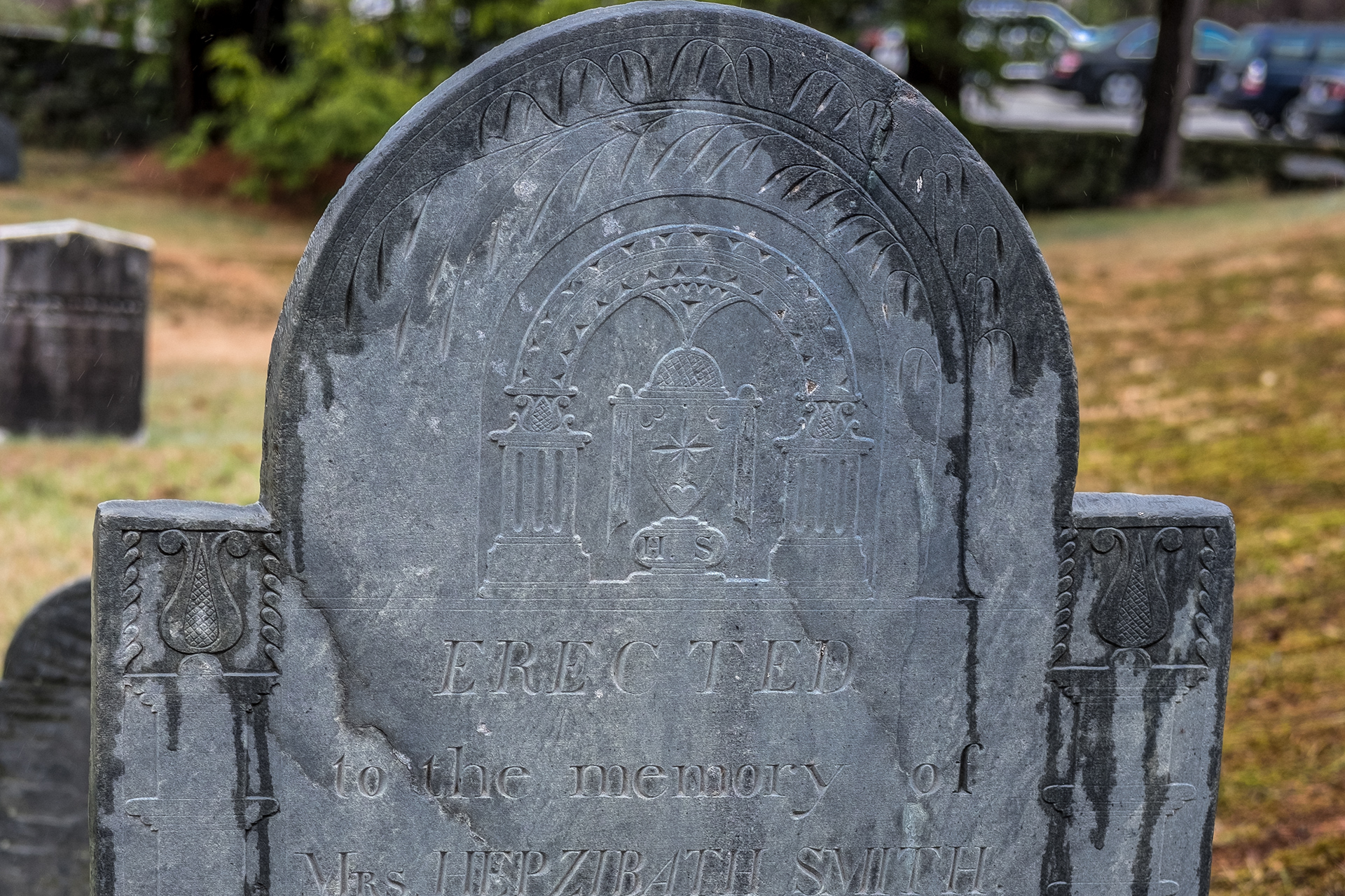

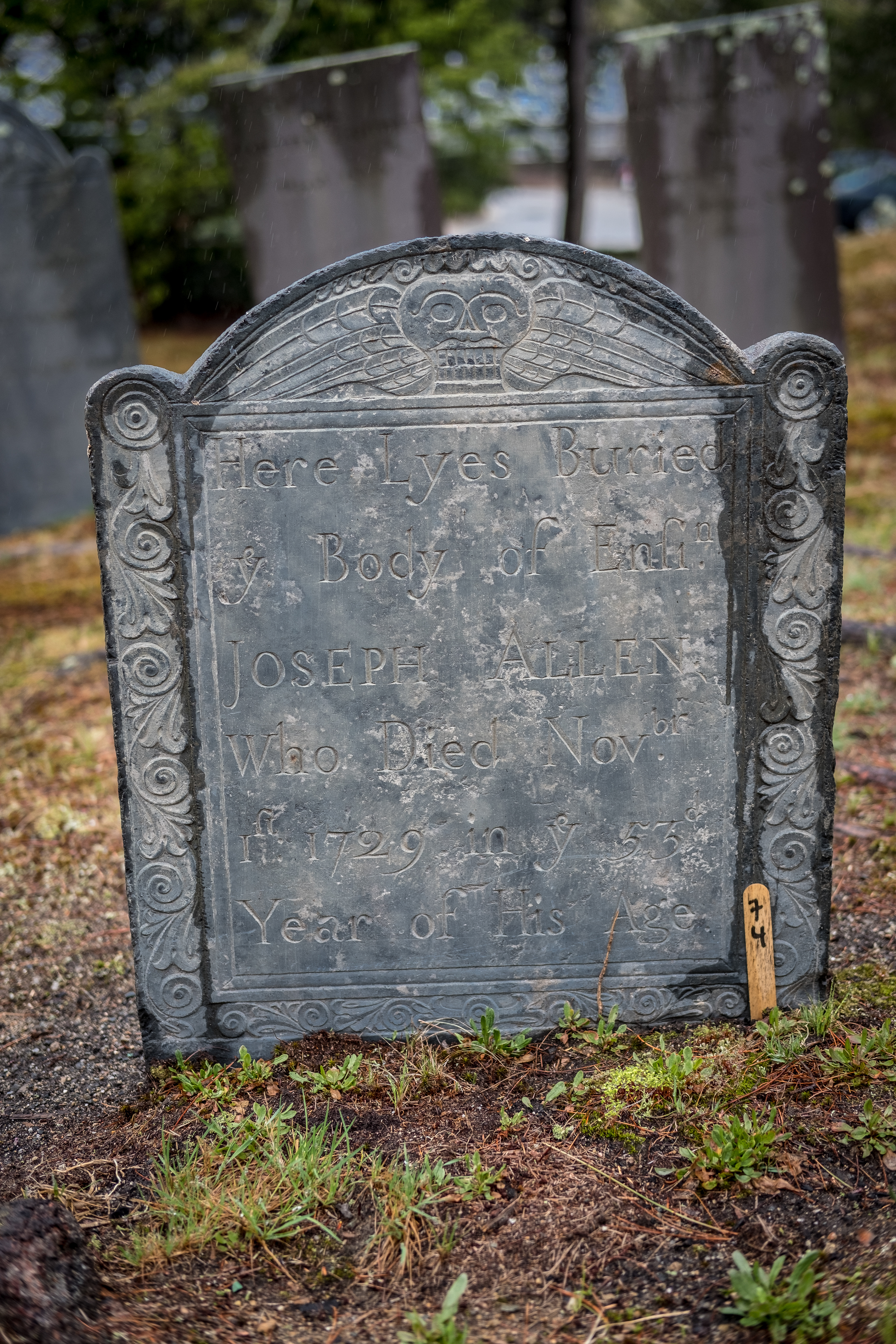


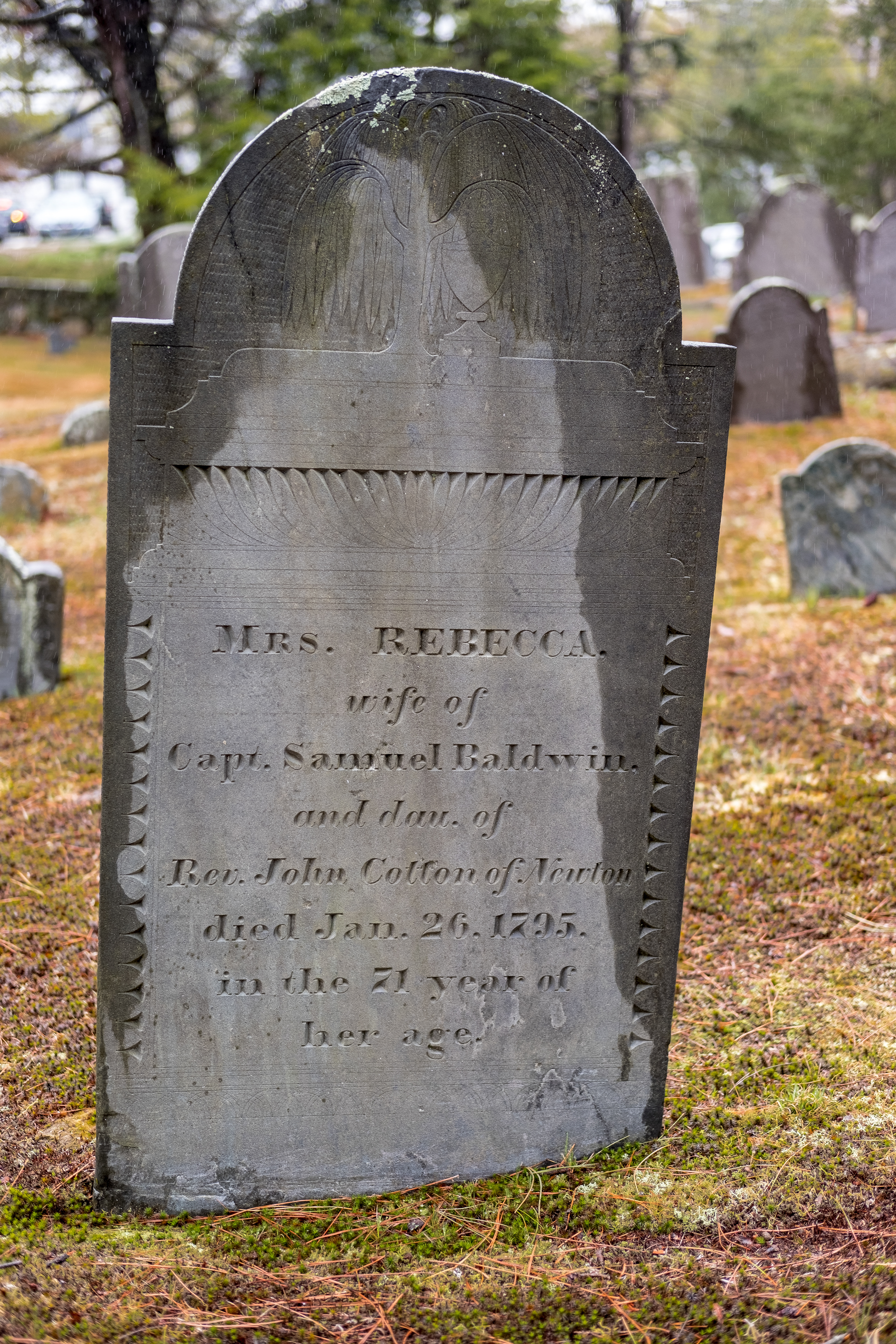

Almost every New England town has a Puritan cemetery, or at least a few Puritan gravestones in the town cemetery. Some of these stones are quite beautiful (see here); others are profoundly poignant. The iconography of these stones has been the subject of much academic study. Three typical symbols can be seen here: the winged skull (symbolizing the voyage from life to death), the urn (for ashes), and the willow tree (the tree of life).
Following, from Wikipedia, is a discourse on Puritan New England Funerary Art. It traces the gradual "shift in emphasis away from the fate of the soul of the deceased, but instead [to] the mourning of those left behind." In other words, the focus gradually changed from the dead to the living as societal attitudes toward death softened "from terror to peace." This shift can be seen even in this limited sample, with the winged deathshead prominent on the single stone from the early 18th Century, while the urn and willow are featured on others from the latter part of the century.
This Puritan cemetery is located in the nearby town of Weston, Massachusetts. I photographed the stones during an intermittent rain, under a gray, lifeless sky—giving them an appropriate somber quality. For more on this subject, see also Puritans II and Puritans III. Here’s the Wikipedia piece, in full:
Cultural Background. The primary objective was to extol the virtues of paradise and the transformation of the flesh to spirit. There was a distinct shift that emphasized the inappropriateness of scriptural art. The narrative style of England had changed to one of emblems. Puritans were adamantly against attributing human form to spiritual beings such as God, angels, or spirits, so iconography such as death was preferable and did not violate the second commandment.
Our modern view of death and burial recoil from the Puritan’s use of coffins, skulls, shovels, barred teeth, and empty eyes that were typically seen on gravestones. To the Puritans, these were traditional symbols brought from England. Death was to be depicted as the transformation from the flesh to the spiritual realm without the gritty naturalistic detail. Early New England stones have emblems derived from English morality and the baroque style. Later gravestones are simpler and depict the stages between death and new life, where the soul moves from the body.
Iconic Images: Winged Deathshead. Though seemingly frightening, the symbol of death in Puritan New England was much closer to depicting the symbolic voyage from life to death. Death is first a winged head, but with careful analysis of gravestones, there is a distinct transformation to the glorification of the soul. Another common depiction of death is a full skeletal body, typically clad with a scythe or the moon and sun in his hands.
This picture of death was meant to instill the terrors of death. In the corners of a typical stone with this depiction are angels at the top and bats of the underworld at the bottom. The scythe is most often mid-swing among flowers symbolizes the flowering of a man’s life cut off by death and time.
A winged death head can be seen to the right and symbolizes the triumph of death. A typical image of death has serrated teeth, “hole eyes,” a thin elongated jaw, and a slash for a mouth. This image has been commonly used since Elizabethan times.
Within fifty years the depiction of death changes. The death’s head has become crowned, the lower jaw eliminated, and serrations of teeth appear on the upper row, a characteristic carving of the mid-18th century. Particularly, the eyes become more animated—almond shaped and with pupils—seeming more soul-like than deathlike. Extra imagery such as foliage, grapes and vines, and hearts suggest new life through sacraments and Resurrection. This transition cannot be clearly, or easily, seen through the gravestones. The changes are very minute and gradual leaving some stones at a disturbing image in between an empty skull and a lively soul.
Iconic Images: Willow and Urn. Typically seen as a European symbol, the tree of life has been significant since Sumerian times. The Puritans took this symbol and created their own versions. The tree can be interpreted as life in celestial paradise or as the human life; however, during the 18th century the two were used interchangeably by the New Englanders. In the 19th century, the weeping willow made a distinctive entrance.
The willow suggests a Greek revival in architecture and a shift in emphasis away from the fate of the soul of the deceased, but instead the mourning of those left behind. The urn is a container to hold ashes used by Imperial Roman. Usage of these icons was part of a larger style toward sentimentality in mourning art. This redirected the emotional output of those left behind. Instead of fearing their loved ones damnation, this depiction is much more peaceful. For example, "Here lies the body of" is replaced by "In memory of." There was also a transition from slate to marble. The evolution of style of death's head, and urn and willow design is to be found in almost every cemetery in New England. The emblems of death shifted as the societal interpretation of life and hereafter changed from terror to peace.

